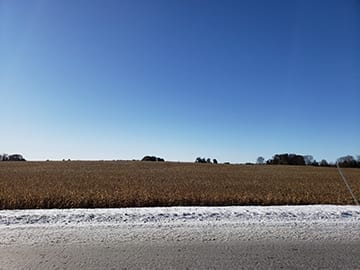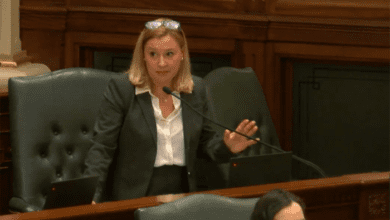Rain dictates 2019 East Central Illinois crop

BY DANI TIETZ
dani@mahometnews.com
The 2019 growing season in East Central Illinois was unlike any farmers of this generation has seen before.
From unusually wet conditions through the beginning of June, to spotty rainfall throughout the summer to snowy conditions as early as October, precipitation has ruled what farmers were able to do and produce.
“We had too much rain early, planted the crop too wet that we probably shouldn’t have planted, but we were against the clock,” Les Hoveln, a part-time farmer and Ag Lender at Gifford State Bank, said.
“A lot of people were bumping up against crop insurance deadlines. So if you miss those dates, you are getting a reduction in your crop insurance coverage.
“Guys were hammering; thousands and thousands of acres were planted that first week of June.”
According to the Illinois Water Survey, between March and June 2019, the Champaign area saw approximately 4.5 inches of rain more than normal. But once the seed was in the ground and the fields dried up, Champaign County received more than 2 inches less rain than it normally does.
“It just turned off,” Hoveln said.
“And yet, we still had a crop of some sort.”
Overall, Hoveln said the East Central Illinois area fared better than other parts of the nation.
Coming off a 2018 season that produced record-breaking yields, Hoveln said both soybean and corn yields are down, but not by much.
“In this area, we’re pretty fortunate,” he said.
With friends in South Dakota, he knows how hard the western states were hit when they received snow at the end of September.
Many counties in western Illinois still have quite a bit of crop in the field. His friends in South Dakota battled snowdrifts as high as the corn tassels.
According to the Department of Agricultural and Consumer Economics at the University of Illinois, Illinois farmers will see a decline of 31 bushels per acre from the 210 bushels per acre yield they saw in 2018. The document also predicts that soybeans will be down 12.5 bushels per acre in Illinois.
Because most of the crops were planted late, harvest has also come later than usual.
Unexpected rain and snow on Oct. 31 and Nov. 11 delayed the harvest for some farmers even further.
“Everybody was pretty much shut down,” Hoveln said. “Prior to that, they were sitting and waiting on a June crop to dry out a little bit in the field before they harvested it.”
Hoveln said most soybeans are already out of the field in this area, but for those that are left, the below-freezing temperatures could cause the pods to rupture and drop the seeds.
Across Champaign County there continue to be pockets of unharvested corn.
Getting the kernels from the plant is becoming increasingly more difficult with days of shorter daylight, but Hoveln believes that with the upcoming warm-up predicted by the National Weather Service, farmers will be able to get back in the fields soon.
Market prices are also on farmers’ minds as 2019 comes to a close.
Prices are predicted to be higher than 2018, but with lower yields, growers may be feeling a strain as they prepare for the 2020 growing season.
“You know I think every farmer out there truly believes at some point, this is all going to catch up and we’ll see a little bit of a rally,” Hoveln said.
According to “Projected Yield and Revenue Changes from 2018 to 2019 for Corn and Soybeans in the Midwest States,” by Gary Schnitkey, revenue changes will be mixed for 2019.
The report predicts that “farms in the eastern corn-belt could have much lower incomes” due to yield declines.
Coming into the holiday season, farmers are looking forward to finishing out their 2019 work. Once the ground thaws a little more, those who have not harvested will be able to finish as others look to wrap up their tilling and fertilizer work in preparation for the following growing season.




